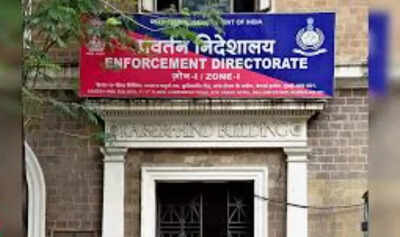Kids, young moms leave men behind in Uttarakhand border villages for better education | India News

DEHRADUN: In a cluster of high-altitude villages near the India-China border in Uttarakhand’s Uttarkashi district, households are shaped by absence. Across eight settlements – Harsil, Mukhba, Bagori, Dharali, Sukhi, Purali, Jhala and Jaspaur – the presence of young women and children has steadily thinned. The migration hasn’t been forced, nor has it followed economic distress. It stems from a quieter reckoning: the recognition that local schools cannot meet the expectations families now place on education. In response, women have moved with children to towns like Dehradun and Uttarkashi, leaving behind men to manage apple orchards and tourism businesses.
Anupriya Rawat, who once lived in a border village near Harsil, now resides in Dehradun with her child. Speaking to TOI, her voice held no resentment, only resignation. “Ideally, I would not like to stay in a city away from my husband, but we are forced to make this sacrifice for the future of our children,” she said. “Several other women also left the village for their children’s sake.”
At the heart of this shift lies education – or the lack thereof. Across the eight villages, there is only one inter-school. Many of the settlements have a single primary school, but Bagori doesn’t even have that. In those that do, the same two teachers are often responsible for all subjects, across all grades. Villagers said the schools fail to meet basic standards.
“The schools are fraught with issues like lack of hygiene and absence of teachers,” said Asha Panwar, a resident of Dharali who left years ago to raise her children in Uttarkashi. Her husband continues to live in the village, but she remains in town with her children, now 16 and 11. “Almost all our villages are emptied due to this problem. You will not find any young daughter-in-law or school children back there,” she said.
Despite this dislocation, the families are not necessarily broken. Many are economically secure, even prosperous. Apple farming remains a strong source of seasonal income, and the pilgrimage economy surrounding the Char Dham route brings in consistent earnings. The men manage their lands and lodges, either alone or with elder relatives.
“It’s no doubt tough staying apart from one’s wife and kids, but the silver lining is that we are getting economic independence by staying back in our villages,” said Madhvendra Rawat, a resident of Harsil. “Sometime back, one of our villagers hired a chopper to ferry his father to a private hospital during a medical emergency, which reflects prosperity. However, staying sans family has its own fallout, especially during medical emergency and festivities.”
Officials acknowledge that the shift to towns has been happening, but claim education facilities in the villages are not to blame. “The availability of teachers, school infrastructure and other facilities in govt schools in the region is not below par,” said Harsha Rawat, block education officer, Bhatwari, Uttarkashi. “These are ‘vibrant villages’ wherein special funds are being provided for the upkeep of facilities, yet families are migrating because they can afford education in towns. The community needs to show inclination towards their native places too rather than getting drifted.”
A source in the education dept recalled a visit by education minister Dhan Singh Rawat to Bhatwari in Oct 2024. “He expressed apprehension regarding the closure of the intermediate school in Harsil given the rampant migration of mothers and children from the area,” the source told TOI. “People have to understand migration is not the solution.”
Still, for mothers who pack up their lives and take their children down to the towns, that argument may ring hollow. Back in the hills, the sound of school bells may echo, but classrooms remain half-empty.






